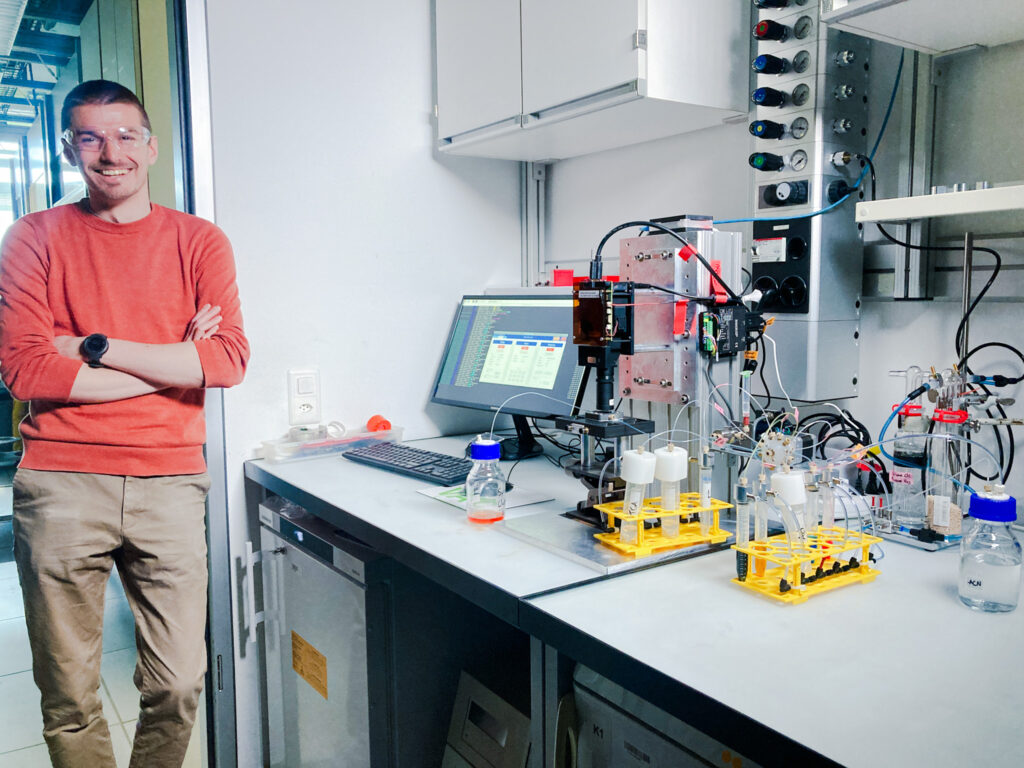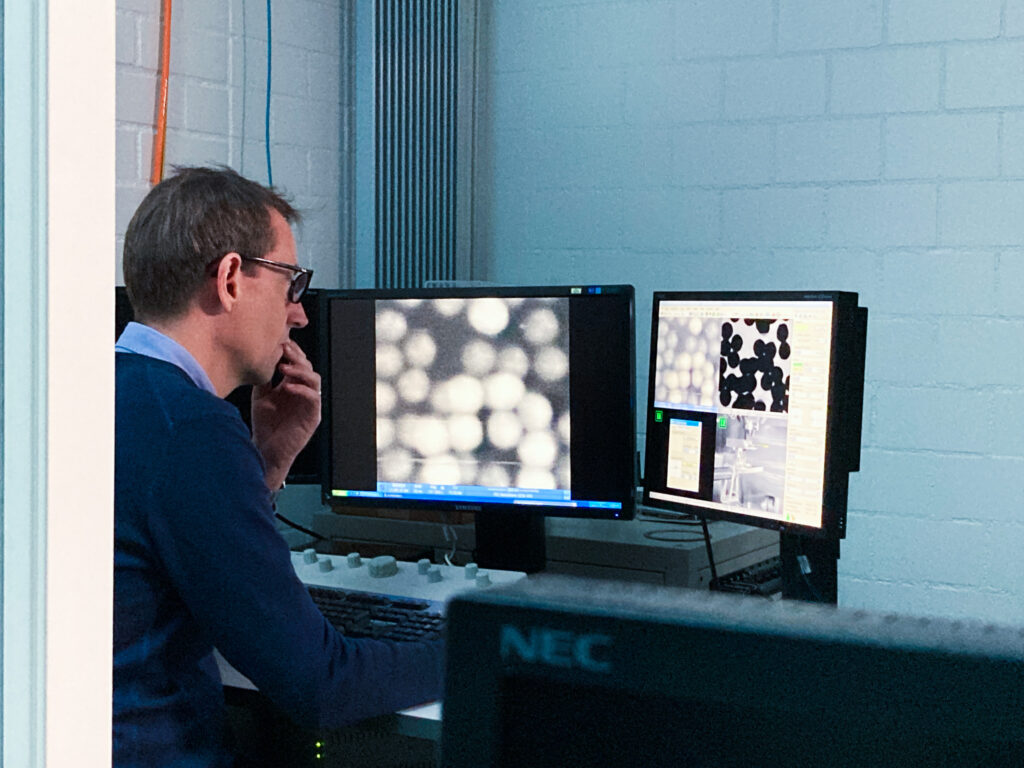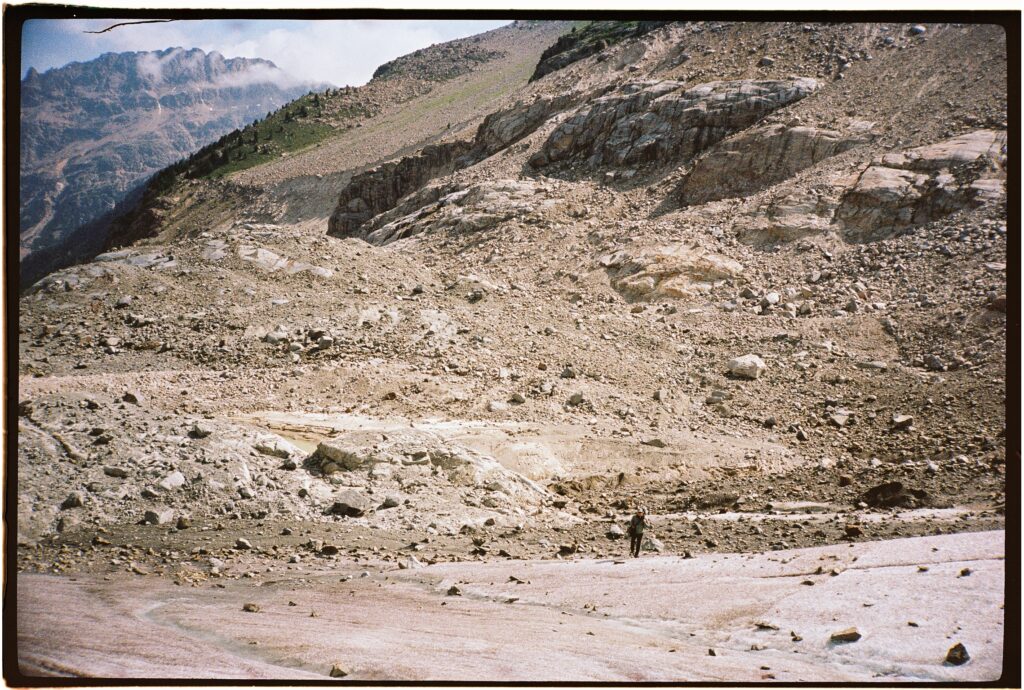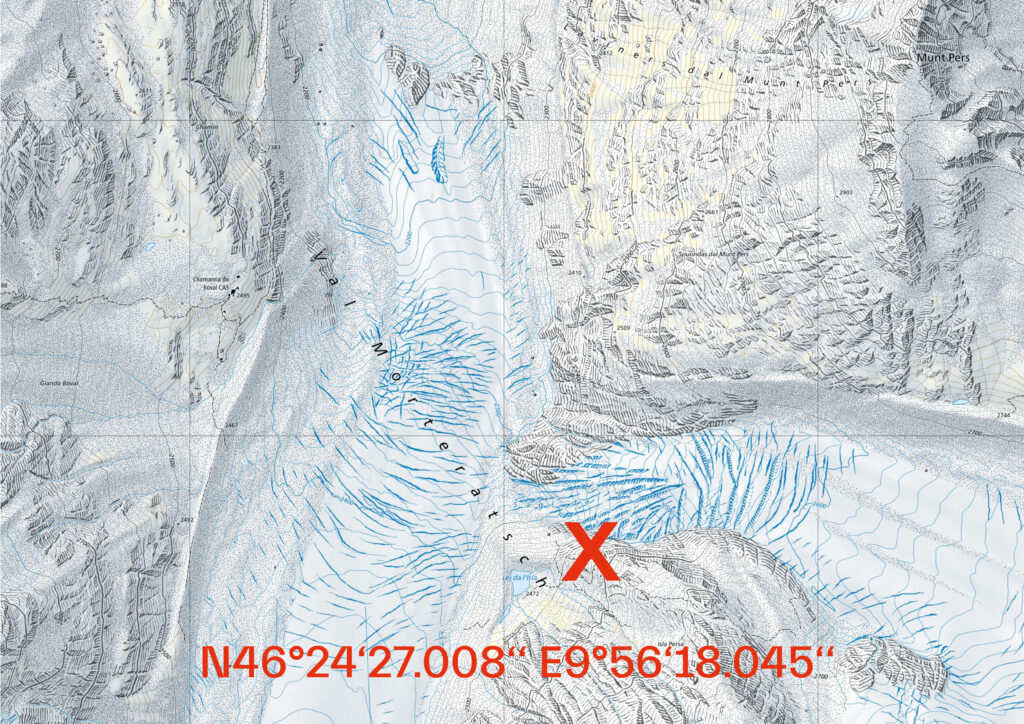The sound composition with recordings from Crying Glacier is encoded from binary code into synthetic DNA. Using a method co-developed by ETH Zurich researcher Robert Grass, the DNA strands—visible only as fine powder—are encapsulated in glass and embedded in a borehole in the rock near the glacier.
This storage technique, inspired by fossilization, ensures long-term stability of the data. In 2125, the DNA will be decoded, and the sound played back into the empty valley, where the glacier will likely have vanished. Once more, the landscape will be filled with the sounds of creaking ice, gurgling meltwater, and bursting air bubbles—acoustic traces of a vanishing body shaped by the climate crisis of the early 21st century.
Coordinates and decoding instructions are archived at the Swiss National Sound Archives.


Help bring this project to completion!
→ DONATE NOW
Your donation supports:
– the final sound composition,
– the DNA encoding process,
– a public ceremony with live listening at Morteratsch Glacier in October 2025,
– the creation of a long-term archive connecting science and acoustic ecology.

Photo by Lutz Stautner & Philipp Becker
Project team:
Ludwig Berger – artist
Anastasia Orlova (Association Planète Bleue) – fundraising & partnerships
Nicholas Schärer – production
Prof. Robert Grass – scientist (ETH Zurich)
Supported so far by:
ETH Zurich
Atlas Data Storage, Inc.
Temperatio Stiftung
Elisabeth Weber Stiftung
SMKK-Stiftung
SUISA
Further support is welcome.
